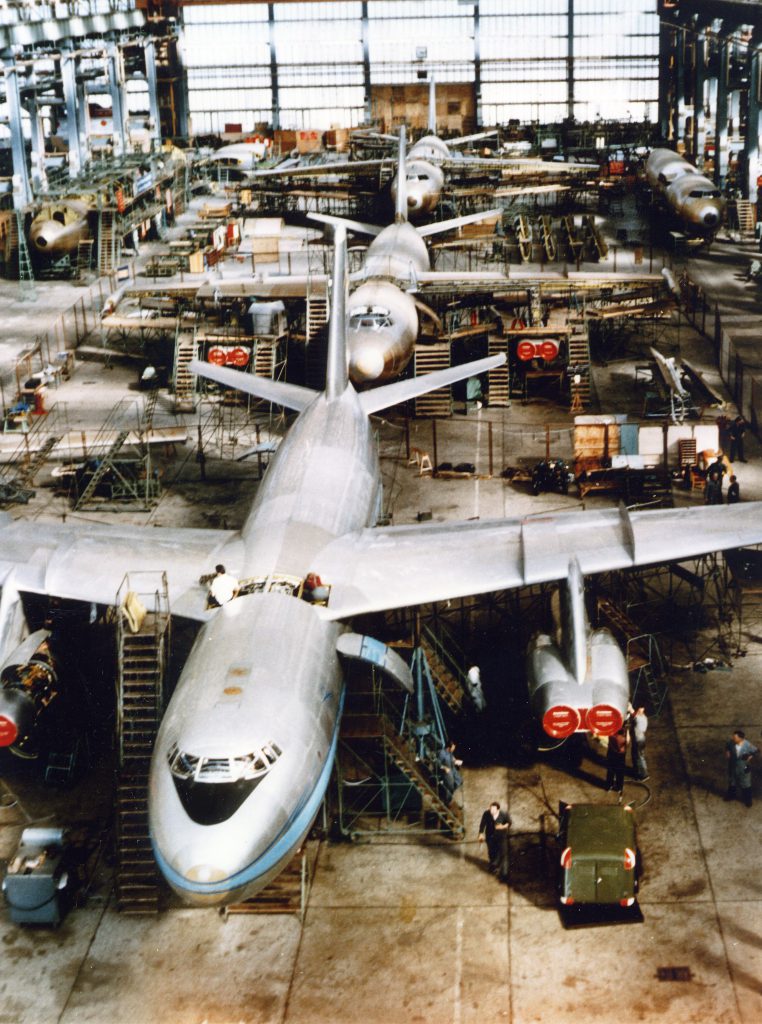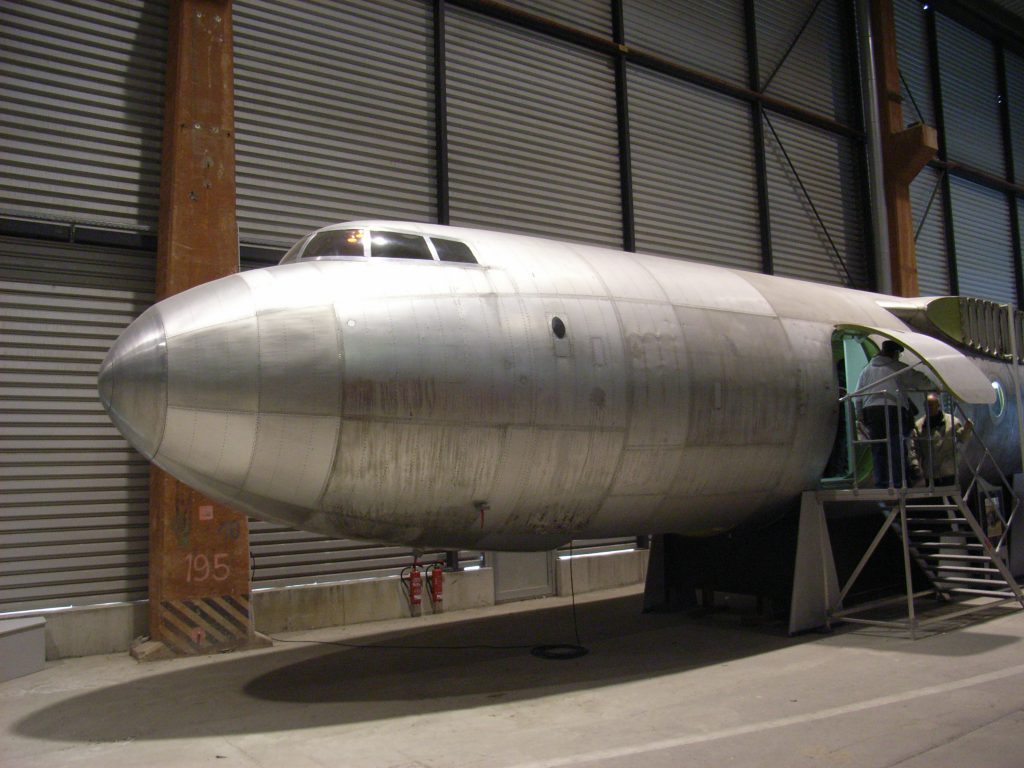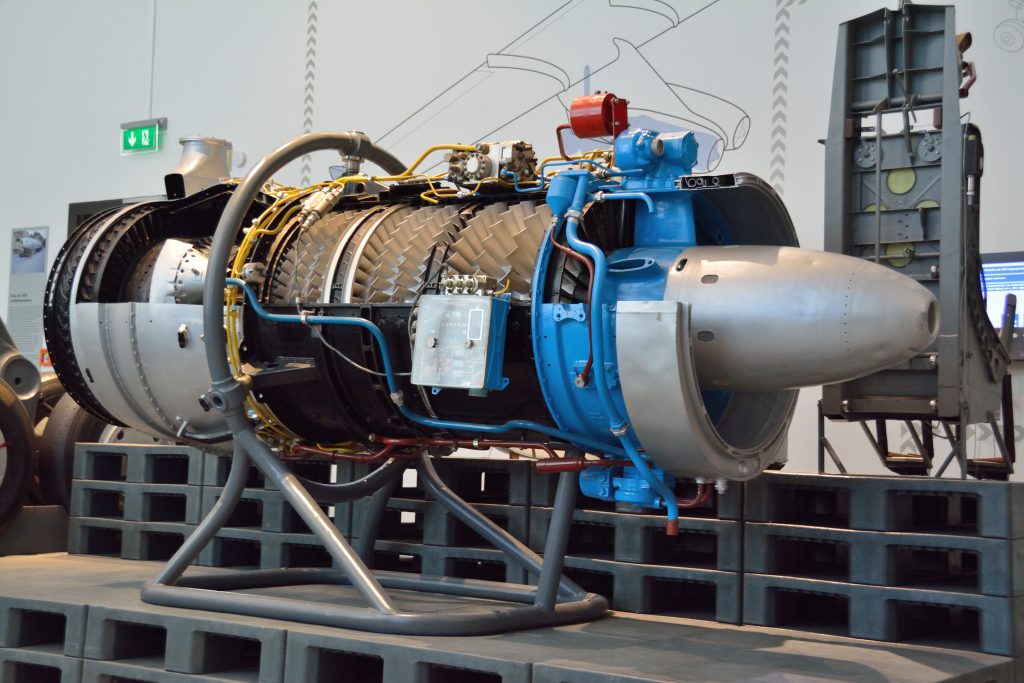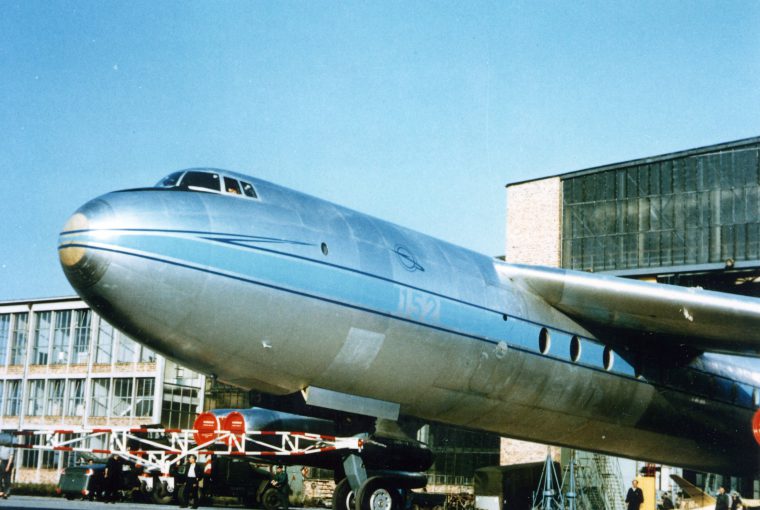EVEN ARDENT AIRCRAFT ENTHUSIASTS ARE UNLIKELY TO RECOGNISE THE NAME ‘BAADE 152’. Yet, this jet airliner — developed in the 1950s by VEB Flugzeugwerke in Dresden, East Germany — has a fascinating story to tell. It begins with Brunolf Baade, one of the most talented yet unsung German aircraft engineers of the last century. Born in Berlin in 1904, Baade began his aeronautical career with Bayerische Flugzeugwerke in Bavaria, working alongside the legendary Willy Messerschmitt.

Series production in Dresden
After a spell in America, Baade joined the design office of the Junkers company, where he worked on the Ju-88 light bomber and its successors, the Ju-188 and Ju-388. He was a key figure in developing one of the most radical aircraft of the Second World War — the Junkers Ju 287 four-engined jet bomber with swept-forward wings. But time was not on Baade’s side; the war ended before his design flew.
The Junkers works at Dessau on the east side of Berlin came under Russian control, and in 1946, Baade and other key engineers were forcibly moved by the Soviets to Podberezye near Moscow. There, they were instructed to continue developing the Junkers design to create the OKB-1 jet bomber. That aircraft — now with conventionally swept wings — made its maiden flight in 1952, but the project was subsequently cancelled.

“BAADE WAS ONE OF THE MOST TALENTED YET UNSUNG GERMAN AIRCRAFT ENGINEERS”
Baade, however, persuaded the Soviets to redevelop the OKB-1 as a state-of-the-art jet airliner, to demonstrate the prowess of the newly formed communist German Democratic Republic. A key part of the deal was the relocation of Baade and his fellow engineers, along with their families, back to East Germany. The authorities agreed. In 1954, the engineers returned home, establishing VEB Flugzeugwerke at the Klotzsche airfield on the outskirts of Dresden.

VEB soon rolled out their new jet airliner, the Baade 152, which made its maiden flight on 4th December 1958. Although other jet airliners, such as the de Havilland Comet, Sud Aviation Caravelle and Boeing 707, were already in service, the Baade 152 offered some radical new ideas, with its 26.3m wing located high on the deep fuselage and two underwing pods housing two engines each.
Even more unusual was its tandem landing gear, with the nose and main wheels located on the fuselage centreline, with wing tip-mounted stabilisation wheels. At the time, this weight-saving design had already been seen on military jets such as the Boeing B-47 and B-52, but had never been used before — or since — on a civilian airliner.
Four months after the maiden flight, on 4th March 1959, the Baade 152 prototype made its second flight. It would also be its last. The pilots completed the flight test and began to descend into a low pass for a filming crew when the aircraft entered a steep dive. The aircraft crashed about six kilometres from the airfield, killing all four on board. The cause of the crash remains a controversial debate today.
It was a bitter blow to East German prestige, but not yet the end. A second prototype was built, making its maiden flight the following year, and construction began on production aircraft for the national airline, Interflug. However, Eastern-Bloc politics again intervened, with the Soviet Union requiring that the airline buy Russian Tupolev airliners instead. The VEB production line and the partly built aircraft were dismantled, with the engines being reallocated for use in warships and power stations.
One hull, construction number 11, survived and was found in 1995 being used as a chicken coop. It was moved to Dresden airport and restored by EADS EFW (Elbe Flugzeugwerke GmbH), the direct successor of VEB. It is a fitting reminder of the skill and fortitude of Brunolf Baade and his 300 fellow engineers and their families, for whom the 152 project meant a ticket back home.
Brunolf Baade died on 5th November 1969 in Berlin.
“ONE BAADE 152 HULL SURVIVED AND WAS FOUND IN 1995 BEING USED AS A CHICKEN COOP”







